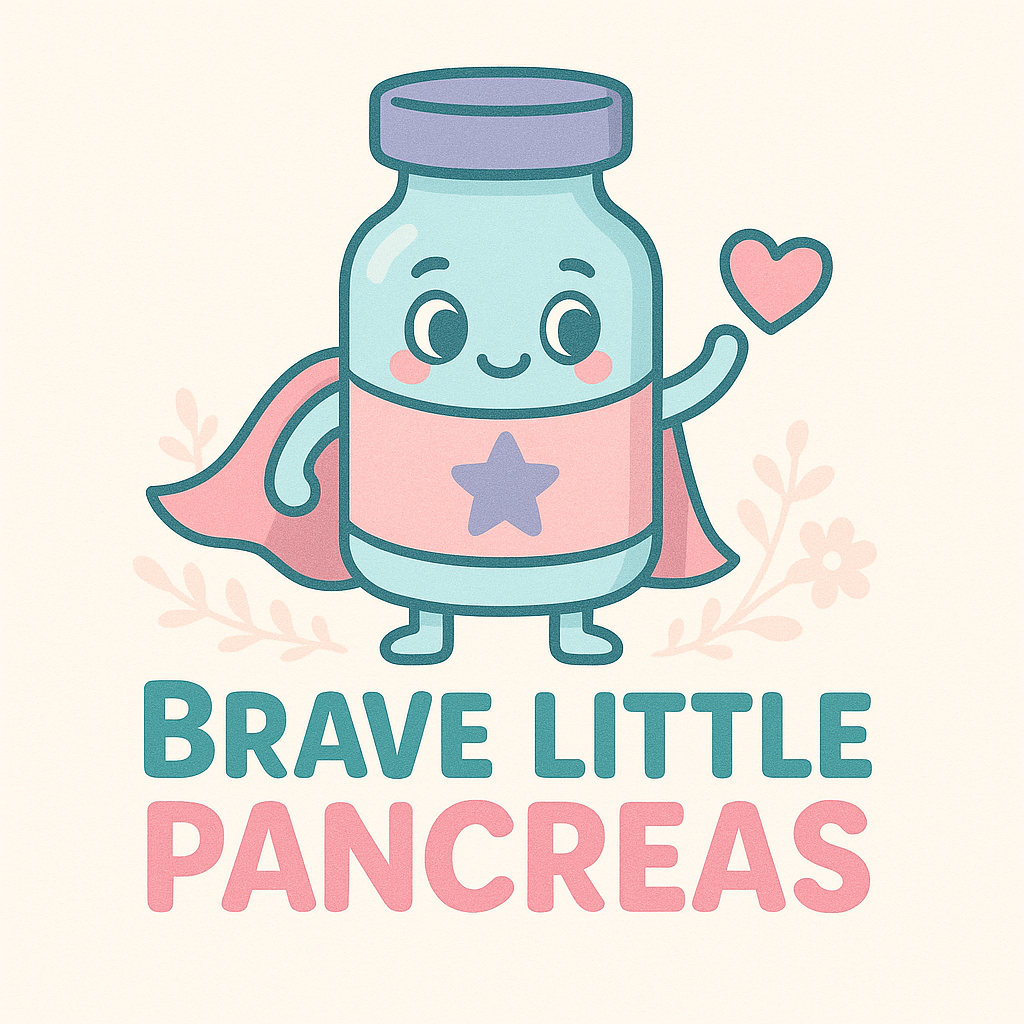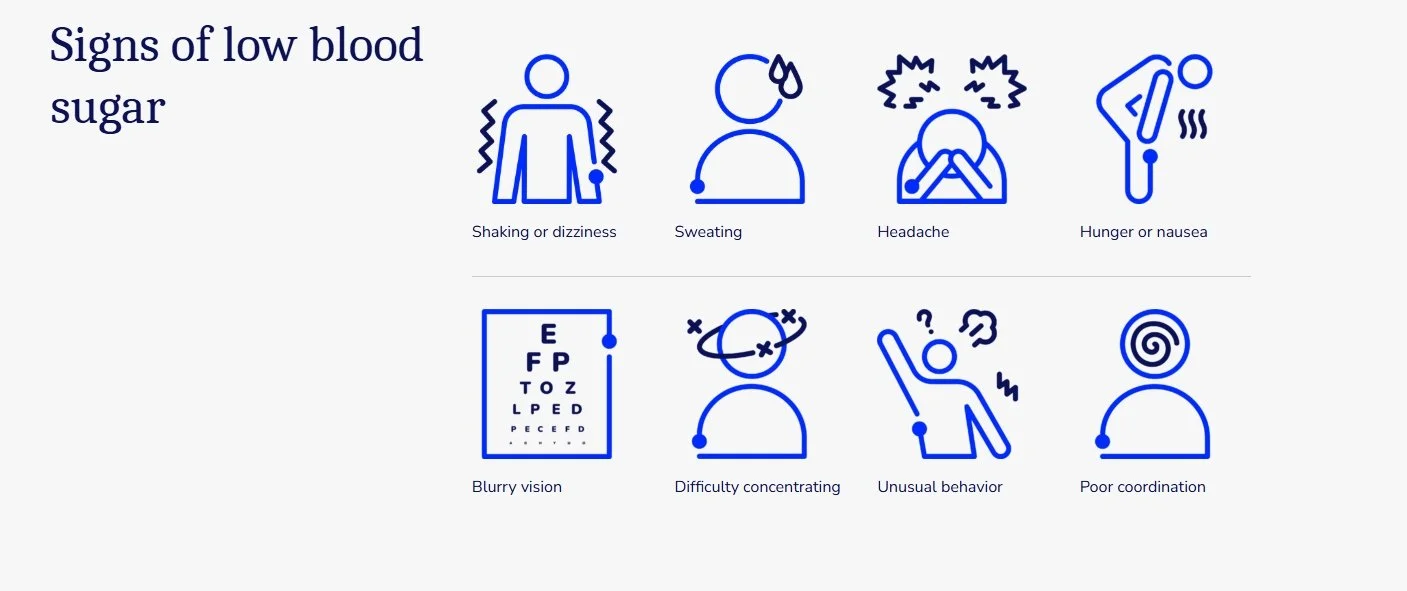In this lesson, you’ll learn:
✔️ What hypoglycemia (low blood sugar) is and why it matters
✔️ Common signs and symptoms of lows in children
✔️ What to do if you think your child is low
✔️ How to prevent severe lows before they happen
What Is Hypoglycemia?
Hypoglycemia, or “low blood sugar,” happens when blood glucose levels drop too far below your child’s safe range. For many children, this means below 70 mg/dL (but your diabetes care team may set a slightly different target).
Low blood sugar can be dangerous if not treated quickly, but the good news is — with practice, you’ll get very good at spotting and treating lows before they become serious.
Common Signs of Lows in Kids
Every child is different, but here are the most common symptoms to watch for:
Shaky hands or body
Sweating (clammy skin)
Irritability or sudden mood changes
Pale skin
Headache
Hunger
Feeling tired, weak, or dizzy
Trouble paying attention
👉 In younger kids, look for behavior changes — fussiness, crying, or refusing to play.
👉 In older kids/teens, they may not notice symptoms right away (this is called “hypo unawareness”).
Severe Symptoms (Emergency)
If blood sugar goes very low, symptoms can include:
Confusion or trouble speaking
Seizure
Fainting or unresponsiveness
⚠️ This is a medical emergency. Use glucagon if available and call 911.
What is glucagon?
Glucagon is a hormone used in emergency situations.
For people with type 1 diabetes (T1D), emergency glucagon is used when blood-glucose levels become dangerously low. Glucagon can be given by injection, auto-injection pen, or nasal spray. Like insulin, it is available only by prescription.
When to use glucagon
Glucagon is generally used when a person with T1D is experiencing a severely low glucose level and is unable to swallow to treat with rapid-acting carbohydrates (e.g., juice), unconscious, or having a hypoglycemic seizure.
It is important to have glucagon on hand in case of an emergency and ensure others (especially caregivers, partners, and roommates) know where it is kept and how to use it.
How to use glucagon
Glucagon can be administered through injection, auto-injection pen, or nasal spray.
Directions on how to administer each type of glucagon are included with product packaging. Familiarize yourself with how to use glucagon as soon as you receive it and ask your diabetes educator, pharmacist, or healthcare provider for further explanation if needed.
Routinely check your prescription’s expiration date and replace it as needed.
What To Do if You Think Your Child is Low
Check blood sugar with a meter or CGM if possible.
If below 70 mg/dL (or symptoms are strong and you can’t check), treat immediately with the 15–15 Rule:
Give 15 grams of fast-acting carbs (juice box, glucose tabs, regular soda, gummies).
Wait 15 minutes, then recheck blood sugar.
If still low, repeat until blood sugar is back in range.
Once stable, give a small snack or meal if it’s not close to eating time.
Preventing Lows
Always carry low snacks (juice, tabs, gummies, small candies).
Check before exercise, bedtime, and when routines change.
Work with your care team to adjust insulin doses if lows happen often.
Teach teachers and caregivers the signs + how to act quickly.
Quick Parent Tip
✨ You won’t catch every low before it starts — and that’s okay. The goal is not perfection, but confidence. With time, you’ll learn your child’s unique “tells” and feel more prepared to respond.
Next Lesson Preview: Recognizing Highs — spotting when blood sugar is too high and how to respond calmly.



